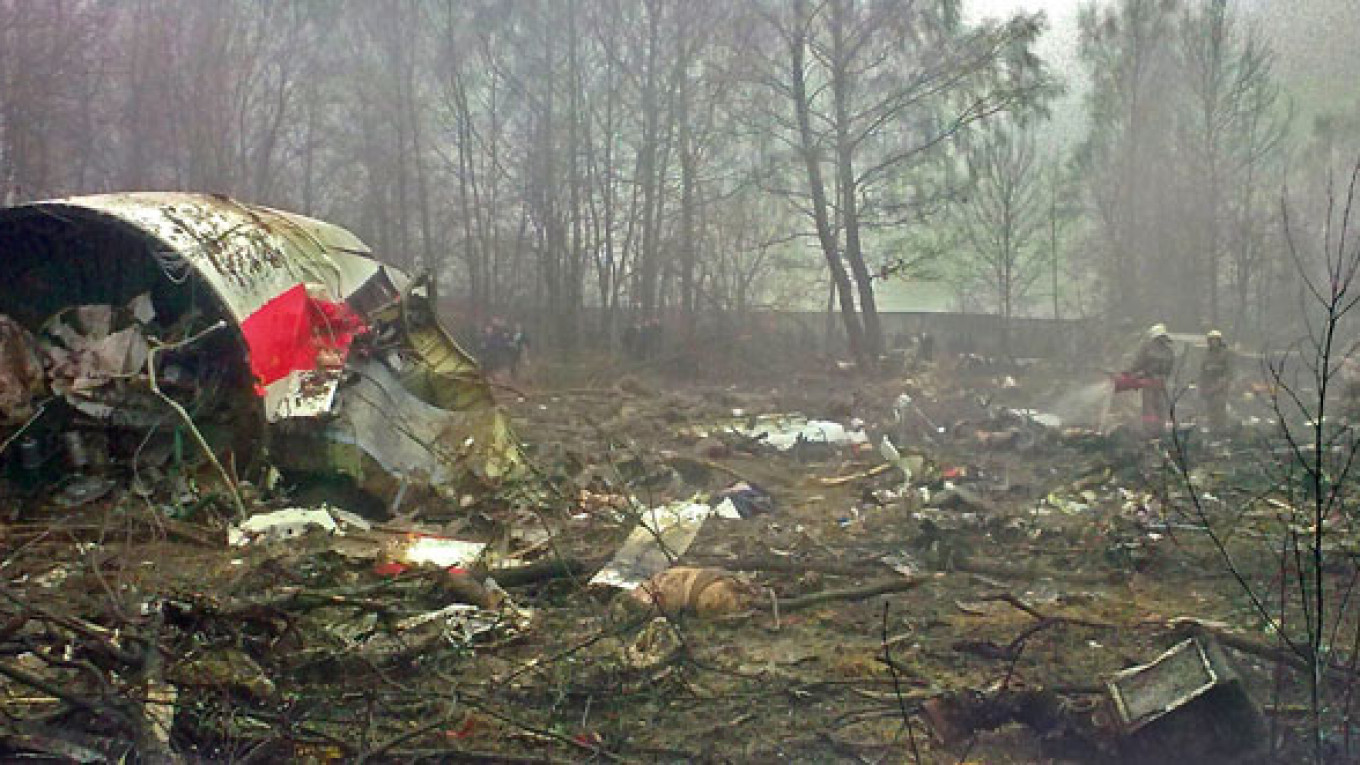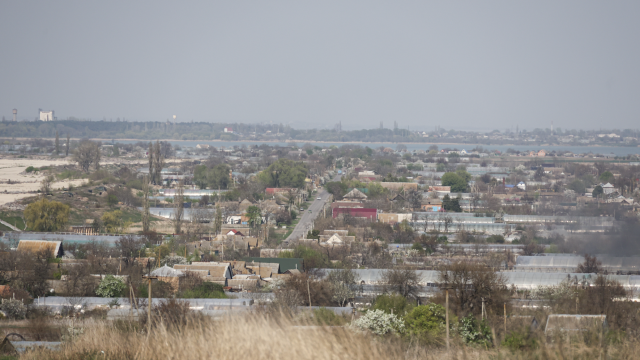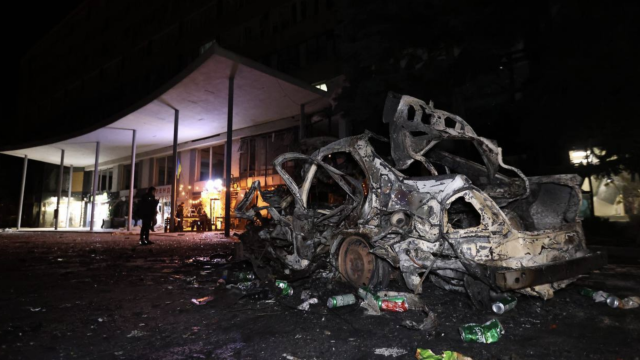Six Russian military aircraft of different designs have crashed since the start of June as the country's air force buckles under the strain of the Kremlin's efforts to show off its military power.
The latest accident came on Tuesday, when a Tu-95 strategic bomber went down in Russia's Far East. All four of its engines had failed mid-flight during a training mission, an unidentified government source told news agency TASS.
Five of the airmen aboard the crashed Tu-95 managed to successfully bail out of the aircraft, while the two remaining crew members died, news agency Interfax reported later.
The bombers, known in the Russian air force as "Bear" aircraft, form the mainstay of Russia's long-range bomber fleet, with around 60 in service. Other Russian bombers include the long-range supersonic Tu-160, and the shorter range supersonic Tu-22M.
Tuesday's crash was the second loss of a "Bear" in just over one month. Four fighter jets have gone down in the same period.
The core problem driving Russian planes into the ground at such an astonishing rate is the air force's heightened tempo of patrols and exercises since the start of the Ukraine crisis 18 months ago, aerospace experts told The Moscow Times.
Last year NATO intercepted 400 Russian aircraft near its borders, a 50 percent increase over 2013. Russian aircraft are being dispatched to test the alliance's reaction times in the Baltic, in Western Europe, and even along the west coast of North America. But these missions are burning the old birds out.
"Russian aircraft were never designed for maintainability, they were designed to be flown 10 years and then thrown away," said Mark Bobbi, a principal analyst at international defense consultancy IHS.
Russia under President Vladimir Putin in 2010 launched a massive 20 trillion ruble ($350 billion) rearmament program intended to replace 70 percent of Russia's aging hardware with brand new equipment by the end of the decade, but the modernization drive for Russia's air force appears to be falling behind the Kremlin's ambitions on the international stage.
"Even with the big budgets of the past 10 years, Russia has not been able to recapitalize its fleet fast enough to get ahead of the age-out curve; the point of no return when an aircraft should not be flown any longer and the risk of accident is magnified," he added.
A source close to the Defense Ministry said on condition of anonymity that the pilot training also factors into Russia's string of aircraft losses.
"Many pilots in Russia today are young or lack flying experience," the source said, pointing out that Russia has only recently begun to purchase advanced computer simulators to give young pilots more practice before entering their cockpits.
A Month of Accidents
Russia has been flying more hours and more missions along NATO's airspace since the start of the Ukraine crisis early in 2014 largely without incident, but the poorly maintained nature of Russian aircraft is catching up with them.
Beginning last month, Russian aircraft are falling out of the sky at a breathtaking pace. According to data compiled by news agency TASS, the air force experienced around 30 crashes between 2010 and mid-2014 — or around one crash every two months.
But in early June, a MiG-29 fighter jet crashed during routing training in Astrakhan in southern Russia. Just 2 1/2 hours later, a Su-34 fighter-bomber went down during training in Voronezh region, about 500 kilometers south of Moscow.
The string of incidents continued with the crash of a Tu-95 "Bear" bomber a few days later. The aircraft's engine caught fire during takeoff, and the plane careened off the end of its runway and was heavily damaged. The accident led to the temporary grounding of the entire Tu-95 fleet.
The air force was forced to ground its fleets of MiG-29 fighter jets and old Su-24 strike jets after two more incidents in early July. Then came Tuesday's Tu-95 crash in the Far East and another temporary suspension of flights.
Old Equipment on Demanding Duty
The crash of a "Bear" on Tuesday marks the second loss of a Tu-95 flying out of Russia's Ukrainka bomber base in the Far East because of an engine failure, pointing to a common theme — poor maintenance for the aging airplanes and their engines.
Russia is working to modernize the aircraft, but is currently only able to produce around 10 new engines a year for over 60 of the massive four-engine aircraft.
The Russian Defense Ministry did not respond to a request for comment on the causes for the recent crashes.
It is hard to estimate the cost of a single "Bear" bomber, since the planes first entered service with the Soviet air force in 1956 and production ended in 1994. They are capable of carrying nuclear bombs and nuclear cruise missiles.
Vadim Lukashevich, a Russian aerospace expert formerly affiliated with the Skolkovo Innovation Center, told The Moscow Times that the string of accidents reflects accumulating problems in Russia's air force that have been exacerbated by the rate of flying amid the Ukraine crisis.
According to Lukashevich, these problems are "poor or irregular maintenance of aircraft, low flight hours [racked up] by flying crews and maintenance personnel, low level of training for airmen, and logistics problems."
IHS's Bobbi said: "Increasing [the operational] tempo has most definitely contributed to the number of crashes. What does increased tempo mean? More sorties and hours, and the more sorties and hours you fly an aircraft, the more likelihood of an accident."
This basic law has been amplified by the poor reliability of Russian aircraft, Bobbi stressed. The planes are meant to be used and disposed of, then replaced by newer aircraft — a quintessentially Soviet means of defense procurement.
In the case of the Tu-95s, old aircraft do not necessarily mean higher accident rates. The design is fundamentally sound, having served for years without major problems. The U.S. also flies bombers designed in the 1950s, such as the famous B-52 strategic bomber.
"Until Russia has a Western-style aircraft design, development and production system, they will always have a higher accident rate," he concluded.
A Message from The Moscow Times:
Dear readers,
We are facing unprecedented challenges. Russia's Prosecutor General's Office has designated The Moscow Times as an "undesirable" organization, criminalizing our work and putting our staff at risk of prosecution. This follows our earlier unjust labeling as a "foreign agent."
These actions are direct attempts to silence independent journalism in Russia. The authorities claim our work "discredits the decisions of the Russian leadership." We see things differently: we strive to provide accurate, unbiased reporting on Russia.
We, the journalists of The Moscow Times, refuse to be silenced. But to continue our work, we need your help.
Your support, no matter how small, makes a world of difference. If you can, please support us monthly starting from just $2. It's quick to set up, and every contribution makes a significant impact.
By supporting The Moscow Times, you're defending open, independent journalism in the face of repression. Thank you for standing with us.
Remind me later.






